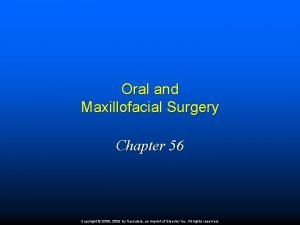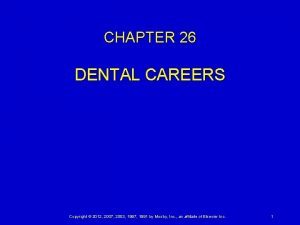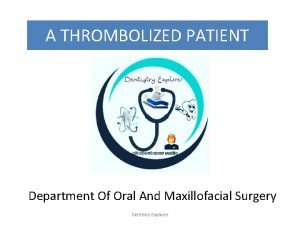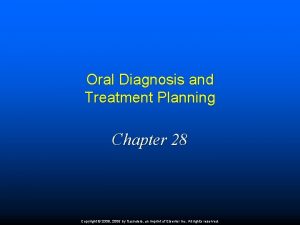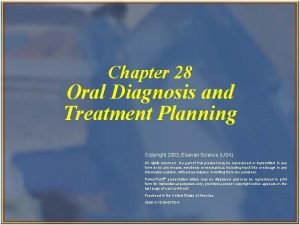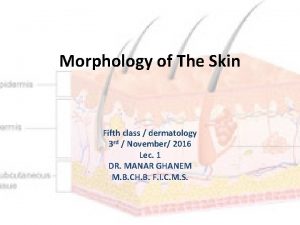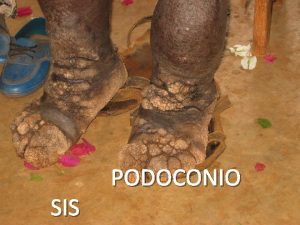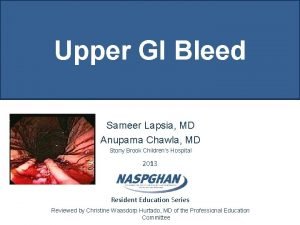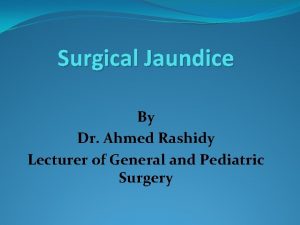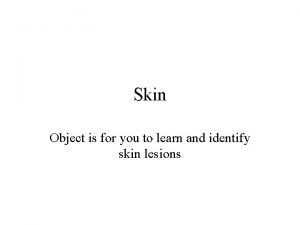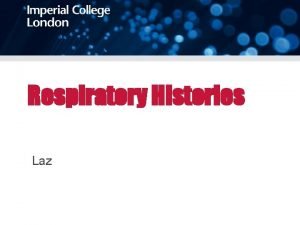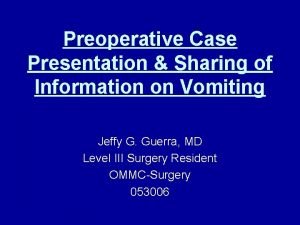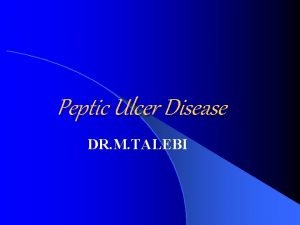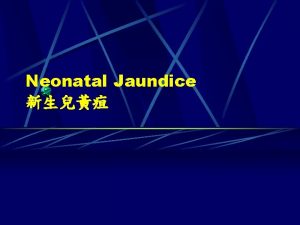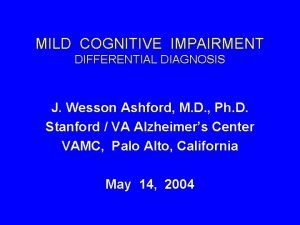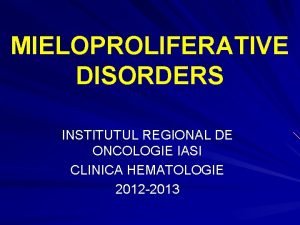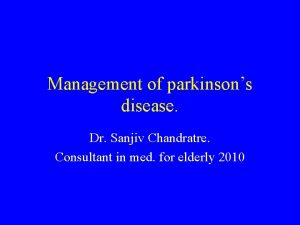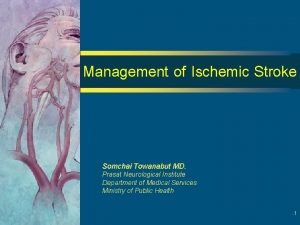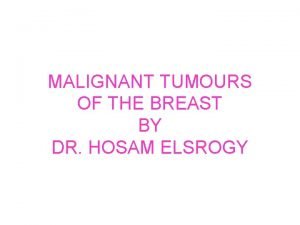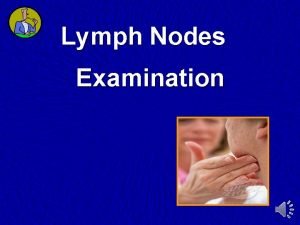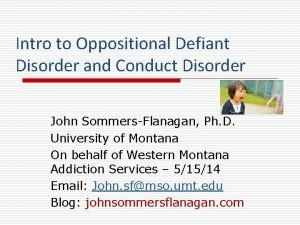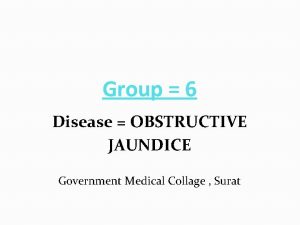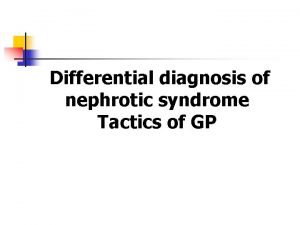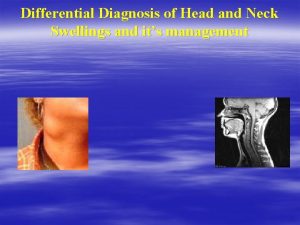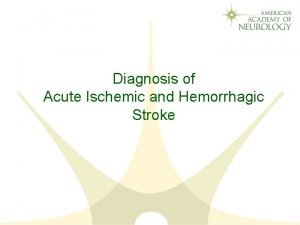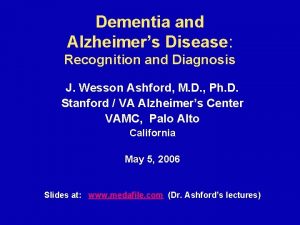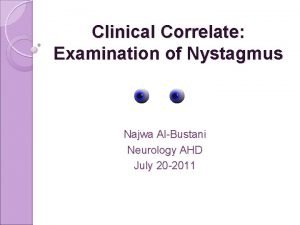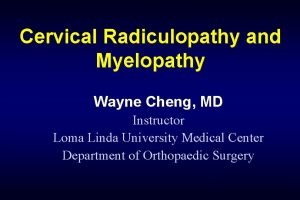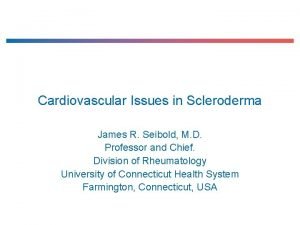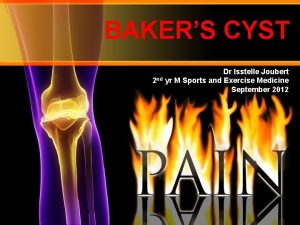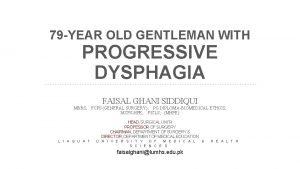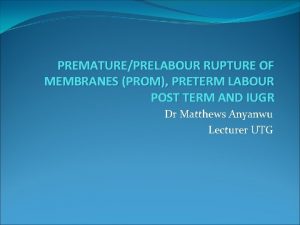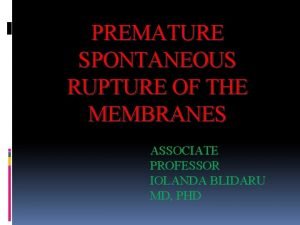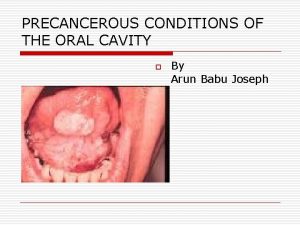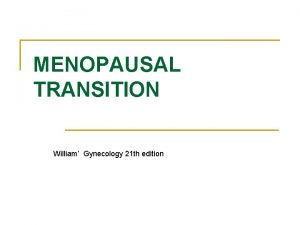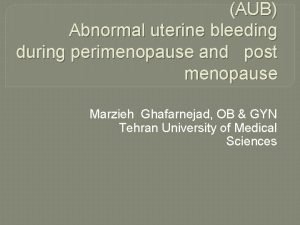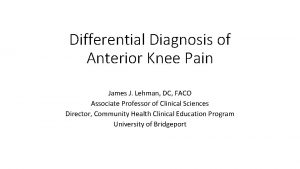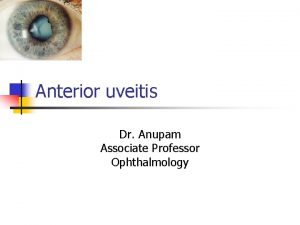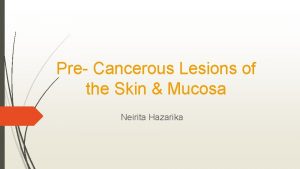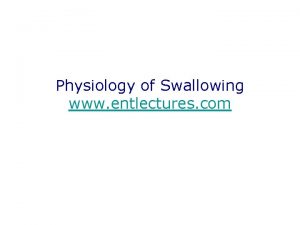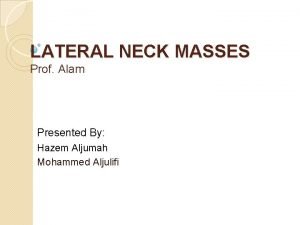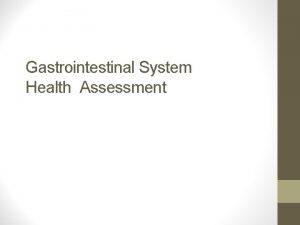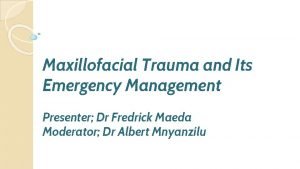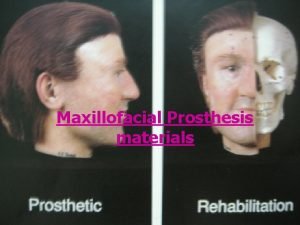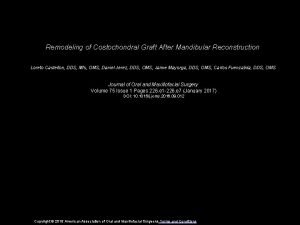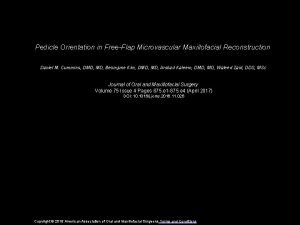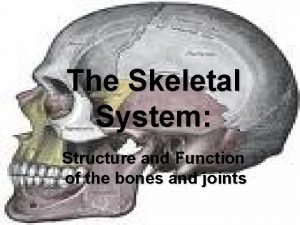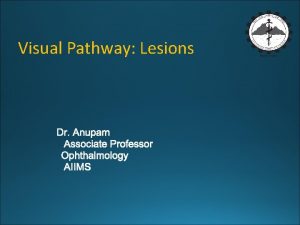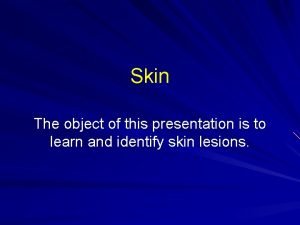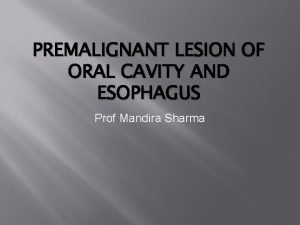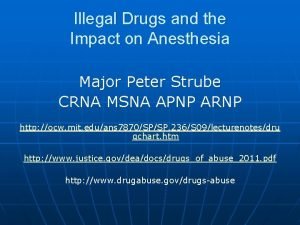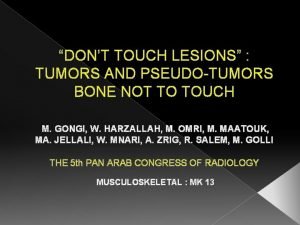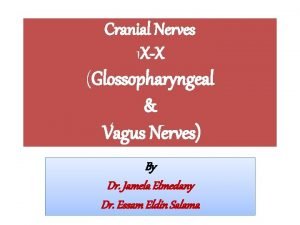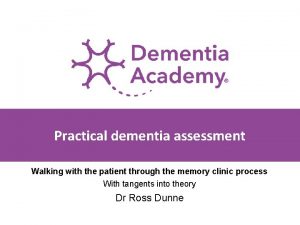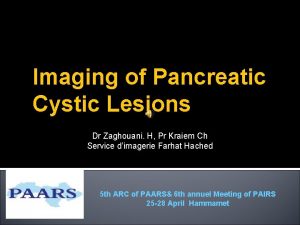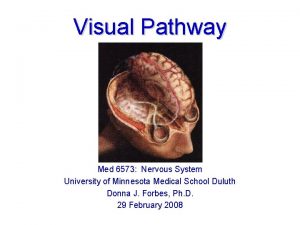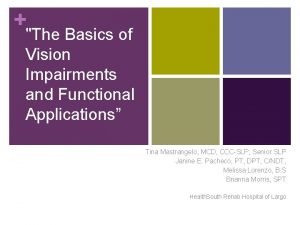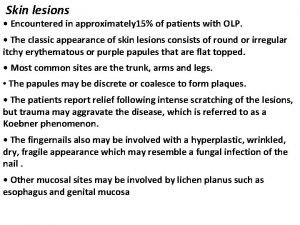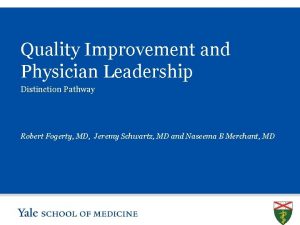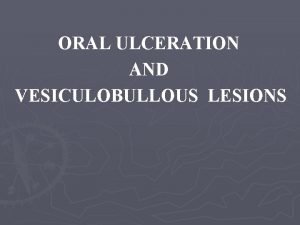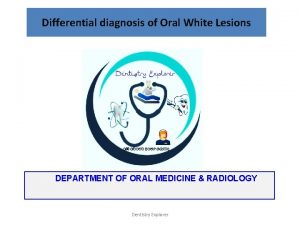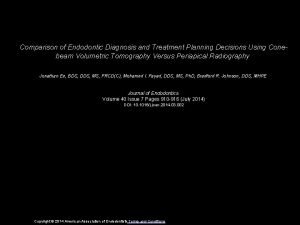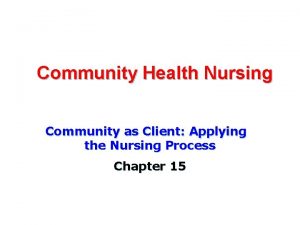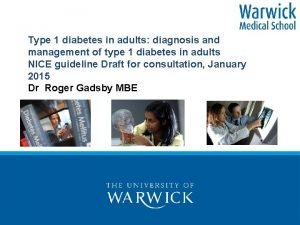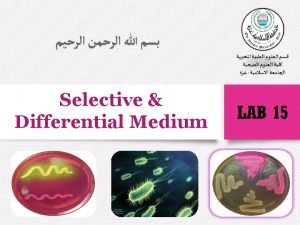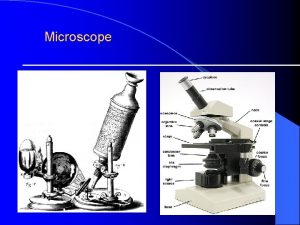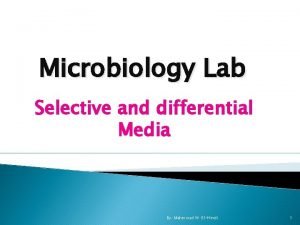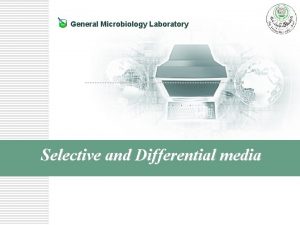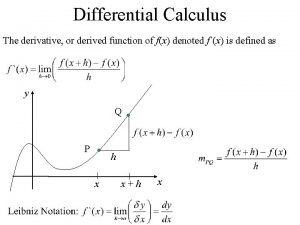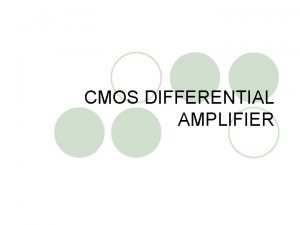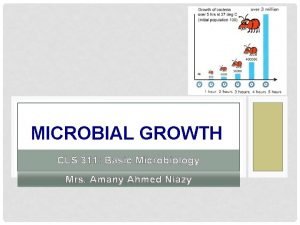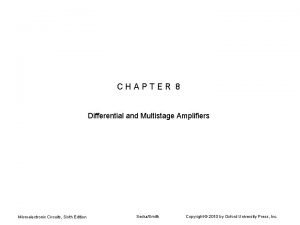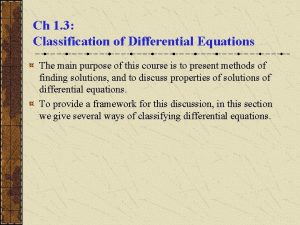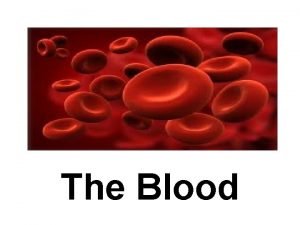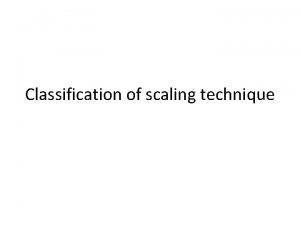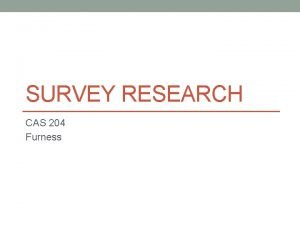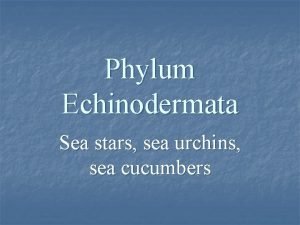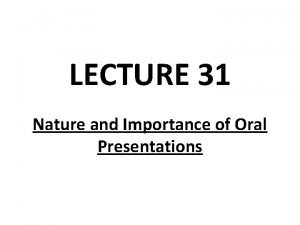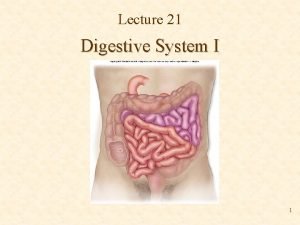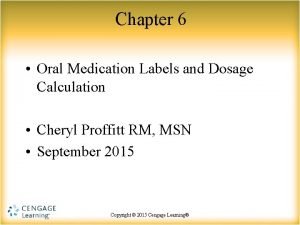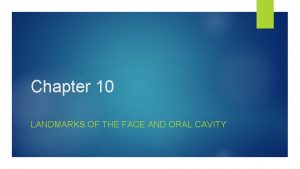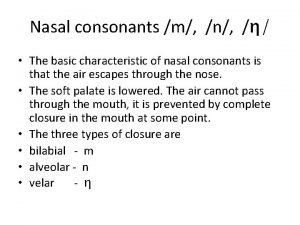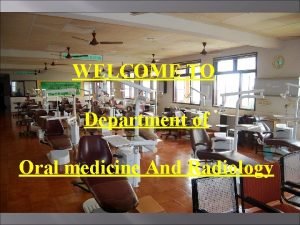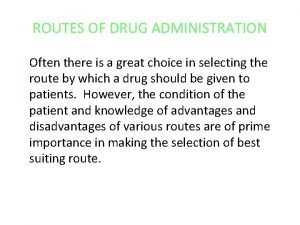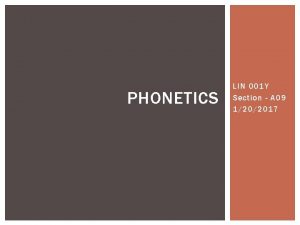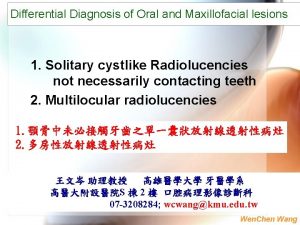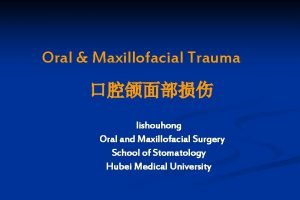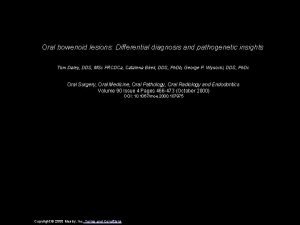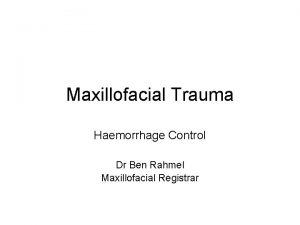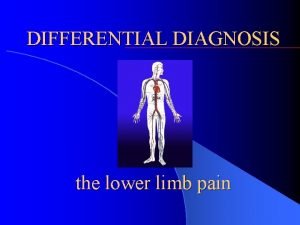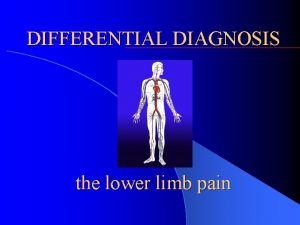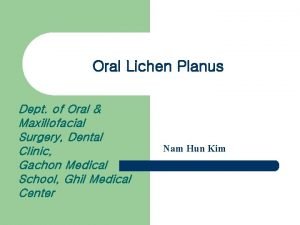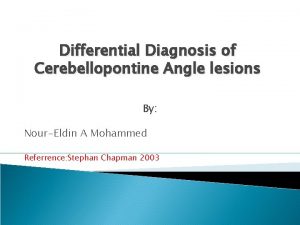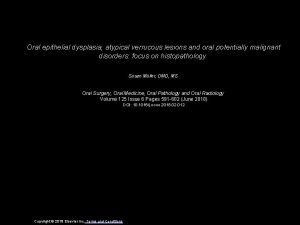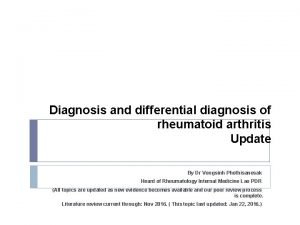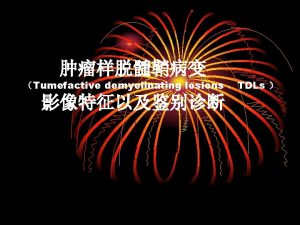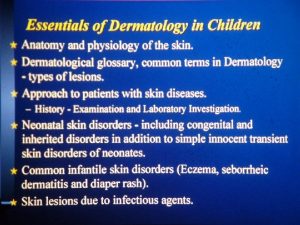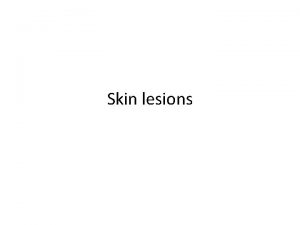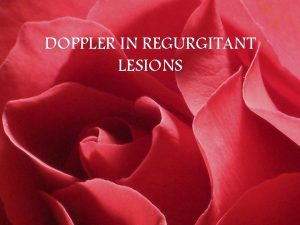Differential Diagnosis of Oral and Maxillofacial lesions 1

























![Hairy leukoplakia | Special types of Leukoplakia ] | | Hairy leukoplakia AIDS patient: Hairy leukoplakia | Special types of Leukoplakia ] | | Hairy leukoplakia AIDS patient:](https://slidetodoc.com/presentation_image_h2/ad9b3f533e86ed90e4ae09556d5e32eb/image-26.jpg)































































































































- Slides: 153

Differential Diagnosis of Oral and Maxillofacial lesions 1. White lesions of the oral mucosa 2. Solitary oral ulcer and fissures 3. Yellow conditions of the oral mucosa 王文岑 高雄醫學大學 牙醫學系 高醫大附設醫院S 棟 2 樓 口腔病理影像診斷科 07 -3208284; wcwang@kmu. edu. tw Wen. Chen Wang

White lesions of the oral mucosa Keratotic Lesions 1. Leukoedema 2. Linea alba buccalis 3. Leukoplakia 4. Nicotinic stomatitis, snuff-dipper’s lesion 5. Benign migratory glossitis and mucositis 6. Lichen planus 7. Papilloma, verrucous vulgaris 8. white exophytic squamous cell carcinoma, Verrucous carcinoma 9. Hypertrophic candidiasis 10. White sponge nevus Wen. Chen Wang

Sloughing, pseudomembranous, necrotic lesions | Plaque | Traumatic ulcer | Pyogenic granuloma | Chemical burns | ANUG | Candidasis Wen. Chen Wang

Ulcers Short-term ulcers | Traumatic ulcers (most) | Recurrent aphthous ulcers (minor) | Recurrent intraoral herpes simplex lesions | Ulcers as result of odontogenic infection | Ulcers with generalized mucositis or vesiculobullous disease | Ulcers secondary to systemic disease Wen. Chen Wang

Persistent ulcers | Traumatic ulcers (occasional) | Ulcers from odontogenic infection | Squamous cell carcinoma | Chancre | Gumma | Ulcer secondary to systemic disease | Low-grade mucoepidermoid tumor | Metastatic tumor Wen. Chen Wang

Normal Color of Oral Mucosa 1). dark pink (reddish) to very pale (almost white). 2). thickness of epithelium, degree of keratinization A). thicker epithelium: more keratinized, more fibrous and less vascular subepithelial connective tissue--color is whiter; hard palate, fixed gingival, dorsal surface of the tongue. B). darker pink or more reddish in color: less keratin, more vascular tissues; vestibule, floor of the mouth, ventral surface of the tongue, retromolar regions. C). normal variations pigmentations. D). substances in the blood, i. e. hemoglobin level polycythemia (red, cherry red) anemia (pale). Wen. Chen Wang

Healthy oral mucosa Wen. Chen Wang

Healthy oral mucosa Wen. Chen Wang

Leukoedema | | non-malignant variation of normal mucosa. most often at buccal mucosa, but also other sites (labial mucosa, soft palate). most often seen adults > 40 yrs. clinical features: ] ] ] early stage: firmly opalescence; later stage: definite grayish white cast with coarsely wrinkle surface which cannot be removed with a tongue blade, but will disappear on stretching. (if injury: red eroded area, mimic cheek biting). Wen. Chen Wang

Leukoedema Wen. Chen Wang

Leukoedema Wen. Chen Wang

Leukoedema microscopic findings: | increased thickness of epithelium. | marked intracellular edema (ballooning) | acanthosis: abnormal thickening of the spinous layer (may be severe with elongation, thickening, blunting, and confluence of the rete pegs or may consist only of their elongation). | parakeratosis: hyperkeratosis with retention of nuclei. Wen. Chen Wang

Leukoedema Wen. Chen Wang

Leukoedema D. D. | leukoplakia, cheek-biting lesion, white sponge nevus. Treatment: | no treatment is required Wen. Chen Wang

Linea alba buccalis | | usually on buccal mucosa near the occlusal plane. usually bilateral, may be related with occlusal trauma, therefore more prominent if patient has little overjet of molars and premolars. Microscopic findings: increased thickness of epithelium, or hyperorthokeratosis (hyperkeratosis without retention of nuclei). Treatment: no special treatment, to avoid bite injury, change the relationship of upper and lower teeth (new denture or orthodontic treatment) Wen. Chen Wang

Linear alba Wen. Chen Wang

Leukoplakia | | | White patch keratotic change occurring on mucous membranes. usually caused by chronic irritation. important etiologic factors including: smoking, cold temperature, hot and/or spicy foods, alcohol, betel nut and /or tabacoo chewing, occlusal trauma, sharp edges of prostheses or teeth, actinic radiation. Wen. Chen Wang

Leukoplakia Clinical features: asymptomatic, old age group (40– 70 yrs). most happened at: tongue, floor of the mouth, lower lip, commissures, palate, mucobuccal fold, alveolar ridge, retromolar area, buccal mucosa. D. D. first R/O lesions of sloughing pseudomembranous types. easy to scrap off or not? if not, lesions are keratotic and need to D. D. with many white lesions. Wen. Chen Wang

Homogeneous thick leukoplakia Wen. Chen Wang

Leukoplakia Wen. Chen Wang

Speckled leukoplakia Wen. Chen Wang

Non-homogeneous thick leukoplakia Wen. Chen Wang

Verrucous leukoplakia Wen. Chen Wang

Verrucous leukoplakia Wen. Chen Wang

Verrucous leukoplakia Wen. Chen Wang
![Hairy leukoplakia Special types of Leukoplakia Hairy leukoplakia AIDS patient Hairy leukoplakia | Special types of Leukoplakia ] | | Hairy leukoplakia AIDS patient:](https://slidetodoc.com/presentation_image_h2/ad9b3f533e86ed90e4ae09556d5e32eb/image-26.jpg)
Hairy leukoplakia | Special types of Leukoplakia ] | | Hairy leukoplakia AIDS patient: irregular surface like hair. acanthosis with marked hyperparakeratosis with formation of ridged and keratin projections, areas of ballooning cells and little or no inflammation in the connective tissue. Ballooning changes = koilocytes: enlarged cells, some with enlarged nuclei with perinuclear halos, others are pyknotic nuclei. (papilloma-like virus) , (EM: EB virus), (Immunofluorescence staining for EB virus capsid antigens). Wen. Chen Wang

毛狀白斑 (Hairy leukoplakia) EB病毒感染引起 Wen. Chen Wang

Hairy Leukoplakia on margin of tongue in a homosexual man Wen. Chen Wang

Koilocytes: Hairy leukoplakia Wen. Chen Wang

Lesion due to corroded amalgam fillings lingually in mandibular molars, similar with hairy leukoplakia Wen. Chen Wang

D. D. of hairy leukoplakia in AIDS 1. lesions due to restorative materials: corroded amalgam fillings, white lesions will disappear within a few weeks after fillings are replaced by plastic material. 2. leukoplakia: a. idiopathic leukoplakia: often located on tongue (inferior surface), usually middle-aged women, extensive and smooth surface. b. tobacco-associated leukoplakia: border of tongue, well-defined, smooth surface, regress after stop smoking. Wen. Chen Wang

D. D. of hairy leukoplakia in AIDS 3. lichen planus: border of the tongue, rare (reticular type). 4. chronic hyperplastic candidiasis: labial commissures extending to the buccal mucosa, disappear after fungi -static treatment. Wen. Chen Wang

White Sponge Nevus young, usually can be seen before puberty l wide spread, usually whole oral cavity l has familial pattern l Wen. Chen Wang

D. D with lichen planus | | | Lichen planus usually involve several lesions, leukoplakia is more often a solitary lesion. may have Wickham’s striae: fine grayish white lines arranged in a lace -like pattern may have skin lesion (leukoplakia : no skin lesion) Wen. Chen Wang

Lichen planus Wen. Chen Wang

Nicotinic stomatitis or smoker’s palate | | | Nicotinic stomatitis or smoker’s palate, smoker’s keratosis man, pipe smokers. usually whole hard palate. reddish stomatitis changed to slightly opalescent then white. usually “red/pink dots/spots” as the centers of lesion indication inflammation of minor salivary glands. usually disappear after stopping pipe smoking. Wen. Chen Wang

Stomatitis nicotina palati Wen. Chen Wang

Snuff dipper’s lesion, Tobacco chewer’s lesion | | parboiled appearance of the white lesion, some are thick white plaque lesion depends on where the tobacco was contact with the mucosa. usually on the mandibular vestibule (both the incisors and the molar regions). if change the habit, then most lesions will completely disappear. Wen. Chen Wang

Tobacco chewer’s lesion Wen. Chen Wang

Hairy Tongue Wen. Chen Wang

White hairy tongue 1. elongation of the filiform papillae: increased retention of keratin. 2. male more than female. 3. depends on foods, the color can be different. 4. treated by tongue brushing. Wen. Chen Wang

Black Hairy Tongue Wen. Chen Wang

| | Black hairy tonguefiliform papillae. Caused by elongated Other causes: (i) antibiotics (penicillin or tetracycline) (ii) mouthwashes (sodium perborate or chlorhexidine) (iii) iron preparations (iv) smoking (iv) some foodstuffs (v) herbs Wen. Chen Wang

Geographic Tongue Wen. Chen Wang

Geographic tongue | Benign migratory glossitis and mucositis (Geographic tongue) 1. psychological influences and suspected. 2. irregularly shaped red patches and white patterns like map, on the dorsal , ventral and lateral surfaces of tongue. 3. red patches: desquamated filiform papillae: enlarge and regressive: change every week then completely disappear. Wen. Chen Wang

Geographic tongue 4. generally asymptomatic, sometimes burning sensation, tenderness and pain. 5. treated with : a. bland diet; b. coating the lesion with triamcinolone in Orabase, if symptoms occur Wen. Chen Wang

Median rhomboid glossitis Wen. Chen Wang

Median rhomboid glossitis | | May be congenital ( persistence of the tuberculum impair) or may be associated with candidal infection. Smoking may predispose to the candidosis. There is: (i) absence of filiform papillae. (ii) epithelial hyperplasia and acanthosis. (iii) chronic inflammatory infiltrate in the lamina propria. Wen. Chen Wang

Lichen planus 1. Affecting 0. 5 -2. 0% of the population 2. Mean age at onset: 30 -50 years 3. A mild predilection for females 4. Six forms: reticular, papular, plaque, atrophic, erosive, bullous 5. Malignant transformation -- <1% 6. Etiology: emotional stress or aberrant cellular immunity Wen. Chen Wang

Lichen planus 7. sites: mostly at buccal mucosa (85%), others including gingiva, tongue, palate, floor of the mouth, vermillion border, (skin: small flat papules/ulceration may fuse together). Wen. Chen Wang

Reticular lichen planus (Wickham’s striae) Wen. Chen Wang

Erosive lichen planus Wen. Chen Wang

Plaque type lichen planus Wen. Chen Wang

Erosive lichen planus Desquamative gingivitis Wen. Chen Wang

Lichen planus Wen. Chen Wang

Bullous Lichen Planus If severe liquefaction, then bullae formed; in very severe case, then disseminated erosions. Wen. Chen Wang

D. D. 1. White sponge nevus usually appears at birth (OLP : 70% after 40 yrs. ) D. D. 2. Geographic tongue -- red center with a slightly raised white border: rapidly (in a few days) change site and shape OLP , if change, take longer time Wen. Chen Wang

D. D. 3. Leukoedema if has wrinkles, stretching test can be used to D. D. with Wickham’s striae. D. D. 4. Linea alba Patient sucking cheeks habit, then often has linea alba and mimic Wickham’s striae: asking about patient’s habit. Wen. Chen Wang

D. D. 5. Lichenoid reactions History of taking drugs: a. systemic treatment with streptomycin, tetracycline, hypoglycemics, diuretics, indomethacine…. b. dental restorative materials: dental gold, mercury, silver alloys. Wen. Chen Wang

Papules Lichen Planus Wen. Chen Wang

Management: OLP l l l no treatment jf no discomfort, examined periodically. clinical discomfort ( i. e. burning , tenderness, soreness of oral mucosa): topical steroid severe cases: systemic administration of sedative and cortisone. Wen. Chen Wang

Squamous cell papilloma, papilloma Wen. Chen Wang

Squamous cell papilloma l Features: 1. exophytic, papillomatous shape, pedunculated with rough, cauliflower-like pebbly surface, deep cleft formation. 2. In oral cavity, usually < 1 cm 3. site: tongue (33%), palate, buccal mucosa, gingiva, lips, mandibular ridge, mouth floor Wen. Chen Wang

Squamous cell papilloma 1. age: most 21 -50 yrs (<40 yrs) 2. Not usually in oral cavity, 3. malignant change: very rare (no dysplastic changes) 4. color (depends on whether chronic irritation) hyperkeratosis or not white or pink. Wen. Chen Wang

Verrucous hyperplasia Exophytic mass (a proliferative epithelial lesion), like papilloma. l Precancerous lesion l Epithelial hyperplastic fold towards mucosa surface. l If malignant change: towards underlying connective tissue l (some scholars believe: VH =CA). l Betel nut chewing habit in Taiwan l Wen. Chen Wang

Verrucous hyperplasis Wen. Chen Wang

Verrucous hyperplasis Wen. Chen Wang

Verrucous hyperplasis Wen. Chen Wang

Verrucous hyperplasis Wen. Chen Wang

Verrucous hyperplasis Wen. Chen Wang

Verrucous hyperplasis *management: surgical removal. microscopic findings: confined the final diagnosis. Wen. Chen Wang

Verrucous carcinoma 1. an exophytic type of low-grade SCC. 2. features: 1). most sites: mandibular labial and buccal vestibule and mucosa. 2). older ages: average 60 -70 yrs. 3). may be very large papillary mass or flat covered whole mucosa (sessile base). 4). color depends on the amount of keratin: pink or white. 5). may be moderately firm, but not so hard like invasive CA. Wen. Chen Wang

Verrucous carcinoma 3. Management: 1). wide excision: 5 -yr survival rates as high as 75%. 2). followed-up carefully: a tendency for multifocal tumors to develop after excision. 3). radiation: not very successful due to low grade tumor, on the contrary, radiation may induce malignancy. Wen. Chen Wang

Verrucous Ca. Wen. Chen Wang

Distinguishing histologic features between VH and V ca: | s: VH, sharp varity; b: VH, blunt varity; c: V. ca Wen. Chen Wang

Verruca vulgaris 1. exophytic growth of the epithelium: very common lesion of the skin, rare in the oral cavity. Induced by HPV. 2. features: site: skin, vermillion border, rarely on labial or buccal mucosa or tongue. Wen. Chen Wang

Verruca vulgaris (common wart) Wen. Chen Wang

D. D. with papilloma and verrucous vulgaris: usually on skin, rarely in the oral cavity. …sessile base vs. pedunculated (papilloma). …round eosinophilic bodies in the cells ( in prickle cell layer and granular cell layer) : viral inclusion bodies( not seen in papilloma). Wen. Chen Wang

Squamous cell papilloma verrucous vulgaris Wen. Chen Wang

Squamous cell carcinoma Wen. Chen Wang

Squamous cell carcinoma Wen. Chen Wang

Oral Candidiasis | | Moniliasis, candidosis Classification A. Acute pseudomembranous (Thrush) B. Acute atrophic (antibiotic sore mouth) C. Chronic atrophic (denture-associated stomatitis) D. Chronic hyperplastic (chronic mucocutaneous candidosis; candidal leukoplakia) Wen. Chen Wang

Chronic candidiasis l if low grade infection by Candida albicans: due to long term irritation: ( i. e. tobacco smoking) increase keratin production and retention hyperkeratosis, like leukoplakia can not be scraped off Wen. Chen Wang

Chronic Mucocutaneous Candidiasis Wen. Chen Wang

Acute pseudomembranus type candidiasis Wen. Chen Wang

Acute pseudomembranus type candidiasis Wen. Chen Wang

erythematous cndidiasis Wen. Chen Wang

Factors predisposing to oral candidiasis 1. Systemic factors: physiologic old age, infancy, pregnancy 2. Endocrine disorders: diabetes mellitus, hypothyroidism 3. Nutritional deficiencies: iron, foliate, or vitamin B 12 deficiency 4. Malignancies: acute leukemia, agranulocytosis, 5. Immune defects, immuosuppression, AIDS, thymic aplasia, corticosteroids Wen. Chen Wang

Candida Albicans Wen. Chen Wang

Candidiasis Management: a. discontinue broad spectrum antibiotics treatment, use more selective ones. b. anti-fungal therapy, ex. nystatin suspension c. treatment of primary diseases. Wen. Chen Wang

AIDS 1. Pseudomembranous cadidiasis, 2. Erythematous candidiasis: lesion on the tongue: along the mid-line and the filiform papilla atrophic. 3. If esophageal candidiasis: may be AIDS. Wen. Chen Wang

Oral Candidiasis as the first manifestation of HIV Infection Wen. Chen Wang

Submucous fibrosis 1. a fibroelastic change of the lamina propria. 2. epithelial atrophy: stiffness of the oral mucosa: trismus and inability to eat. 3. etiology: unclear, strong irritating foods and vitamin B def. , protein def. , betel nut chewing. Precancerous condition Wen. Chen Wang

Submucous fibrosis 1. Clinical: 1). burning sensation: vesicles, ulcerations or recurrent stomatitis. 2). stiffening of certain areas: difficult to opening the mouth and swallowing. 3). like systemic sclerosis or scleroderma. 4). mucosa: finally became blanched and opaque, fibrotic bands. 5). age: usually 20 -40 yrs. Wen. Chen Wang

Submucous fibrosis Wen. Chen Wang

Submucous fibrosis Wen. Chen Wang

Submucous fibrosis Wen. Chen Wang

Submucous fibrosis Wen. Chen Wang

Submucous fibrosis 2. Microscopic findings: severe atrophic, rete pegs disappeared, epithelial atypia, disappearance of fibroblasts, blood vessels obstructed or narrowed. 3. Dense collagen bundles aggregation Wen. Chen Wang

Submucous fibrosis 3. Treatment: 1). could be precancerous. 2). systemic corticosteroid and local hydrocortisone to alleviate pain. Wen. Chen Wang

Sloughing Pseudomembranous Necrotic Lesions May be scraped off the mucosa with a tongue blade, leaving a raw bleeding surface. Wen. Chen Wang

Plaque (material alba): *dental plaque is on the tooth surface, not easily been washed off with water. Wen. Chen Wang

Chemical burns: 1. some analgesics put in the oral cavity: mucosal lesions: aspirin burn etc. or causatic agents (phenol, silver nitrate) used by dentist. 2. diagnosis: history. 3. treatment: protective coating: Orabase, bland diet; systemic analgesics. Wen. Chen Wang

chemical burn Wen. Chen Wang

chemical burn Wen. Chen Wang

chemical burn Wen. Chen Wang

ANUG Acute Necrotizing Ulcerative Gingivitis (ANUG, Vincent’s infection, Trench mouth) 1. inflammatory disorder of gingiva, necrotic ulcerative destruction of the free gingiva, crest and inter-dental papillae. Wen. Chen Wang

ANUG Wen. Chen Wang

ANUG 2. Predisposing factors are very important: (i). mainly due to decrease resistance to infection (ii). gingivitis and periodontitis: poor oral hygiene (iii). Stress these lead to overgrowth of the normal flora or superinfection by anaerobic and fusiform bacilli and spirochete (should be P. i. ). Wen. Chen Wang

ANUG Differential diagnosis: 1. punched out defects of the interdental papillae: pathognomic for ANUG. 2. diffuse gangrenous stomatitis: necrotic gangrenous process spread to oral mucosa except interdental papillae and marginal gingiva: systemic disorders? ? Wen. Chen Wang

ANUG Management: 1. mainly aimed to : superinfection by anaerobic fusiform and spirochetes, poor oral hygiene (gingivitis and periodontitis), and low resistance to infection. Wen. Chen Wang

ANUG (i). antibiotics (penicillin 500 mg, q. i. d. >5 days). (ii). careful scaling, curettement and debridment ( best 24 -48 hrs after antibiotics treatment). (iii). oral rinsing with a solution of 3% H 2 O 2 in saline (1: 3), 12 x daily. (iv). recontouring of the gingiva if necessary. Wen. Chen Wang

Candidiasis Wen. Chen Wang

Angular cheilitis | | | Predisposing factors: decreased vertical dimension of dentures, anemia, vitamin B deficiencies Infection with Candida albicans, other microorganisms Treatment: eliminate predisposing factors, antifungal ointment (nystatin) Wen. Chen Wang

Angular cheilitis Wen. Chen Wang

Angular cheilitis Wen. Chen Wang

Yellow Lesions Fordyce’s granules: a collection of sebaceous glands, covered by normal mucosa. clinically: small elevated granules, color from whitish yellow to yellow. Wen. Chen Wang

Fordyce’s granules 1. in oral cavity: buccal mucosa (usually bilateral), retromolar pad, labial mucosa. 2. usually no ulceration, looks like cheese. 3. histological features: like normal sebaceous glands of skin. 4. 50 -80% population may have, a benign lesions, patient cancer phobia. Wen. Chen Wang

Fordyce’s granule Wen. Chen Wang

Fordyce’s granule Wen. Chen Wang

Lipoma 1. the most common benign neoplasms, but rarely in oral cavity. 2. mature fat cells under skin tissue. 3. usually after 40 yrs. , peak at 50 yrs (middle age). Wen. Chen Wang

Lipoma 4. in oral cavity: most on buccal mucosa and mucobuccal fold, then tongue, floor of the mouth and lips. 5. usually yellow color, but many shapes: sessile, pedunculated; usually smooth surface, no-ulcerated (except with trauma). 6. palpation: nontender, soft, felling like cheese. 7. usually single lesion. Wen. Chen Wang

Lipoma Wen. Chen Wang

Lipoma 1. Microscopic findings: mature fat cells within a connective tissue capsule, fibrous stroma divided into lobules, blood vessels in the septa. 2. Treatment: excision for large lesion, no treatment for small lesions. Wen. Chen Wang

Epidermoid and Dermoid Cysts 1. a kinds of developmental anomalies. Cystic teratoma comes from germinal epithelium. 2. any place in the body, not usually in the oral cavity. 3. if in the oral cavity: patient may have swelling of his/her floor of the mouth. 4. at head and neck: most at floor of the mouth, then at submaxillary and submental areas. Wen. Chen Wang

Epidermoid and Dermoid Cysts 5. any ages, but mostly discovered in 1535 yrs. old, nontender, various sizes, non-fixed, if no trauma: smooth surface. 6. histology classification depends on cystic contents: (i). epidermoid cyst: fluid, keratin, nonspecific structures. (ii). dermoid cyst: sebaceous materials, keratin. (iii). Teratoma: many elements from different germinal layers: bone, muscle, teeth etc. Wen. Chen Wang

Epidermoid cysts Dermoid Cysts Wen. Chen Wang

Epidermoid and Dermoid Cysts Differential diagnosis: ranula, thyroglossal duct cyst, cystic hygroma, brachial cleft cyst, cellulitis, tumors, fat masses. Thyroglossal duct cyst Wen. Chen Wang

Oral Ulcers and Fissures Recurrent aphthous ulcer (canker sore) (RAU) and Intraoral recurrent ulcer of herpes simplex (IRHS) Both are: (i). easy recurrent painful ulcer (superficial), each time lasts 1 -2 wks; (ii). usually have tender LAP (iii). spontaneous heal, no sequelae (scar formation). Wen. Chen Wang

RAU and IRHS Differences: (i). Etiology: RAU: psychic, allergic, microbial, traumatic, endocrine, hereditary and autoimmune mechanisms. IRHS: HSV infection, may be subclinical infection, virus became latent in nerve endings or ganglions reactivation epithelial cells lesions. Wen. Chen Wang

RAU and IRHS (ii). Sites: RAU: freely movable mucosa (nonkeratinized): lips, buccal mucosa, tongue, mucobuccal fold, floor of the mouth, soft palate. IRHS: fixed mucosa (keratinized): hard palate, gingiva and alveolar ridge. Wen. Chen Wang

RAU and IRHS 3. Management: a. in general, no treatment, heal after 1 -2 weeks; b. some ones used: RAU: tetracycline mouthwash and cortisone in Orabase; analgesics (may be). IRHS: Vira-A or Zovirax cream (Acyclovir) Wen. Chen Wang

Minor type of Recurrent aphthous ulcer Wen. Chen Wang

Major recurrent aphthous ulcer Wen. Chen Wang

Herpetiform recurrent aphthous ulcer Wen. Chen Wang

Primary herpetic gingivostomatitis Wen. Chen Wang

Recurrent herpes labialis Wen. Chen Wang

Herpetiform recurrent aphthous ulcer Wen. Chen Wang

Tuberculosis (TB) 1. infectious organisms: Mycobacterium tuberculosis. 2. at oral cavity: uncommon, if any, rarely are primary lesion, but secondary to pulmonary lesions. 3. pulmonary lesion: sputum to small injury site of mucosa tissue, or through hematogenous spread to submucosa then proliferation to ulceration. 4. mostly at tongue then palate, lips, buccal mucosa, gingiva, frenula. Wen. Chen Wang

TB 5. irregular, painful ulcer, became larger slowly 6. easily to have trauma then can be mistaken as traumatic ulcer or carcinoma 7. sometimes without ulcer; if on gingival, then diffuse, hyperemic, nodular or papillary proliferation 8. sometimes involved bone (maxilla or mandible) through hematogenous spread. Wen. Chen Wang

Tubercurosis Wen. Chen Wang

| Tubercles of epitheloid cells, Langhan’s giant cells, mononuclear cells in periphery Wen. Chen Wang

Differential Diagnosis of Ulcers secondary to systemic disease 1. History of predisposing disease or history revealing information suggesting presence of disease. 2. Example: Steven-Johnson syndrome (Erythema multiform). Wen. Chen Wang

Erythema multiform 1. involves lips with multiple red lesions (papule or bullae): rupture: raw, painful lesions 2. other sites including skin lesions; before disease, may have HSV, taken drugs (antibiotics, contraceptives, barbiturates), post-radiation therapy ( i. e. ulcerative colitis patient). Wen. Chen Wang

Ulcers from odontogenic infections: 1. suspicion of ulcer on alveolar or palate 2. digital pressure on alveolus or tooth elicits pus from ulcer 3. trace sinus with gutta percha cone: x-rays to isolate involved teeth. Wen. Chen Wang

RAU Recurrent aphthous ulcer: 1. yellowish ulcer, 0. 5 -2 cm diameter, with narrow erythematous halo 2. on loose mucosa surface. IRHS Intraoral recurrent herpes simplex: 1. cluster of small punctuate ulcers (< 0. 5 cm) 2. on bound mucosa. Wen. Chen Wang

Traumatic ulcers History of trauma or presence of potential etiologic agent. Wen. Chen Wang

Squamous cell carcinoma 1. high suspicion if patient is male over 40, heavy drinker or smoker 2. no evidence of trauma or systemic disease; negative serologic findings 3. risk factors involved: alcohol, betel quid chewing, smoking Wen. Chen Wang

Squamous cell carcinoma Wen. Chen Wang

Squamous cell carcinoma Wen. Chen Wang



 Chapter 56 oral and maxillofacial surgery multiple choice
Chapter 56 oral and maxillofacial surgery multiple choice American academy of oral and maxillofacial radiology
American academy of oral and maxillofacial radiology Chapter 26 oral and maxillofacial surgery
Chapter 26 oral and maxillofacial surgery Chapter 56 oral and maxillofacial surgery
Chapter 56 oral and maxillofacial surgery White lesions
White lesions Independent nursing interventions
Independent nursing interventions Medical diagnosis and nursing diagnosis difference
Medical diagnosis and nursing diagnosis difference Medical diagnosis and nursing diagnosis difference
Medical diagnosis and nursing diagnosis difference Nursing process objectives
Nursing process objectives Chapter 28 oral diagnosis and treatment planning
Chapter 28 oral diagnosis and treatment planning Chapter 28 oral diagnosis and treatment planning
Chapter 28 oral diagnosis and treatment planning Perbedaan diagnosis gizi dan diagnosis medis
Perbedaan diagnosis gizi dan diagnosis medis Primary and secondary lesions of skin
Primary and secondary lesions of skin What is podoconiosis
What is podoconiosis Black stool without blood
Black stool without blood Differential diagnosis of learning disabilities
Differential diagnosis of learning disabilities Jaundice differential diagnosis
Jaundice differential diagnosis Hormetonia
Hormetonia Describe
Describe Acute productive cough differential diagnosis
Acute productive cough differential diagnosis Differential diagnosis red eye
Differential diagnosis red eye Gastric outlet obstruction differential diagnosis
Gastric outlet obstruction differential diagnosis Hourglass contracture of stomach
Hourglass contracture of stomach Haemtemesis
Haemtemesis Ulcer definition anatomy
Ulcer definition anatomy Jaundice physical examination
Jaundice physical examination Vitamin c differential diagnosis mnemonic
Vitamin c differential diagnosis mnemonic Mieloproliferative
Mieloproliferative Parkinson differential diagnosis
Parkinson differential diagnosis Differential diagnosis of stroke
Differential diagnosis of stroke Breast lump differential diagnosis
Breast lump differential diagnosis Pitting versus non pitting edema
Pitting versus non pitting edema Odd differential diagnosis
Odd differential diagnosis Differential diagnosis for pericarditis
Differential diagnosis for pericarditis Hanifin rajka atopic dermatitis
Hanifin rajka atopic dermatitis Obstructive jaundice vs hemolytic jaundice
Obstructive jaundice vs hemolytic jaundice Chicken pix los pinos menu
Chicken pix los pinos menu Nephrotic syndrome differential diagnosis
Nephrotic syndrome differential diagnosis Ohio state lymphedema
Ohio state lymphedema Scalp swelling differential diagnosis
Scalp swelling differential diagnosis Brainstem stroke syndromes
Brainstem stroke syndromes Vitamin d differential diagnosis mnemonic
Vitamin d differential diagnosis mnemonic Grades of nystagmus
Grades of nystagmus Cervical radiculopathy differential diagnosis
Cervical radiculopathy differential diagnosis Ida cbc
Ida cbc Nt pro brain natriuretic peptide
Nt pro brain natriuretic peptide Bakers cyst differential diagnosis
Bakers cyst differential diagnosis Osteochondrosis
Osteochondrosis Megaloblastic anemia lab values
Megaloblastic anemia lab values Differential diagnosis for dysphagia
Differential diagnosis for dysphagia 1152020
1152020 Differential diagnosis for premature rupture of membranes
Differential diagnosis for premature rupture of membranes Diagnosis of pprom
Diagnosis of pprom Osmf differential diagnosis
Osmf differential diagnosis Epigastric pain differential diagnosis
Epigastric pain differential diagnosis Spotting differential diagnosis
Spotting differential diagnosis Molar pregnancy
Molar pregnancy Leukocoria differential diagnosis
Leukocoria differential diagnosis Leukemia survival rate
Leukemia survival rate Polycythemia differential diagnosis
Polycythemia differential diagnosis Differential diagnosis of hydrocephalus
Differential diagnosis of hydrocephalus Diabetic ketoacidosis anion gap
Diabetic ketoacidosis anion gap Abnormal uterine bleeding in postmenopausal
Abnormal uterine bleeding in postmenopausal Patellar dislocation
Patellar dislocation Uveitis definition
Uveitis definition Differential diagnosis of vitiligo
Differential diagnosis of vitiligo Differential diagnosis of molar pregnancy
Differential diagnosis of molar pregnancy Fairy skin
Fairy skin Differential diagnosis of dysphagia
Differential diagnosis of dysphagia Lateral neck swelling
Lateral neck swelling Kavram öğretimi örnekleri
Kavram öğretimi örnekleri Differential diagnosis of otitis externa
Differential diagnosis of otitis externa Abdominal percussion
Abdominal percussion Emergency management of maxillofacial trauma
Emergency management of maxillofacial trauma Silastic medical adhesive silicone type a
Silastic medical adhesive silicone type a Pflegmona
Pflegmona Maxillofacial
Maxillofacial Maxillofacial
Maxillofacial Maxillofacial anatomy
Maxillofacial anatomy Components of the visual pathway
Components of the visual pathway Extrapyramidal vs pyramidal
Extrapyramidal vs pyramidal Describing skin lesions
Describing skin lesions Esophagus
Esophagus Olneys lesions
Olneys lesions Extrapyramidal tract
Extrapyramidal tract Gj mount classification of caries
Gj mount classification of caries Amiante
Amiante Dont touch lesion
Dont touch lesion Vagus nerve lesion
Vagus nerve lesion Chapter 17 oral pathology short answer questions
Chapter 17 oral pathology short answer questions Pr��ca it projektov�� mana����r
Pr��ca it projektov�� mana����r Scattered white matter lesions
Scattered white matter lesions Daughter mother grandmother pancreatic lesions
Daughter mother grandmother pancreatic lesions Periradicular diseases
Periradicular diseases Eye lesions
Eye lesions Eye lesions
Eye lesions White lesions
White lesions Lésions
Lésions Vesiculobullous lesions
Vesiculobullous lesions Site:slidetodoc.com
Site:slidetodoc.com Designing and delivering oral and online presentation
Designing and delivering oral and online presentation Lateral throat form classification
Lateral throat form classification Endodontic diagnosis and treatment planning
Endodontic diagnosis and treatment planning Chapter 81 brake system technology answers
Chapter 81 brake system technology answers Modified macpherson strut
Modified macpherson strut Chapter 42 gasoline injection diagnosis and repair
Chapter 42 gasoline injection diagnosis and repair Automotive technology principles diagnosis and service
Automotive technology principles diagnosis and service Shuster and goeppinger community diagnosis
Shuster and goeppinger community diagnosis Brake system diagnosis and repair
Brake system diagnosis and repair Type 1 diabetes in adults diagnosis and management
Type 1 diabetes in adults diagnosis and management Cleft lip and palate post operative care nursing diagnosis
Cleft lip and palate post operative care nursing diagnosis Differential vs selective media
Differential vs selective media Mac plate results
Mac plate results Difference between differential and selective media
Difference between differential and selective media Partial differential equations example
Partial differential equations example Fastidious bacteria
Fastidious bacteria Displacement to velocity differentiate
Displacement to velocity differentiate Cmos differential amplifier
Cmos differential amplifier Ppt on differential equations
Ppt on differential equations Viable count technique
Viable count technique Equation digital manchester
Equation digital manchester Definition of homogeneous differential equation
Definition of homogeneous differential equation Introduction to linear algebra strang
Introduction to linear algebra strang Growth and decay differential equations
Growth and decay differential equations Differentiate between linear and differential cryptanalysis
Differentiate between linear and differential cryptanalysis Sedra
Sedra Mechanical and electrical vibrations differential equations
Mechanical and electrical vibrations differential equations Definition and classification of differential equations
Definition and classification of differential equations Cbc and differential
Cbc and differential Stapel scale example
Stapel scale example Differential and multistage amplifiers
Differential and multistage amplifiers Differential pair with active load
Differential pair with active load Advantages and disadvantages of sample survey
Advantages and disadvantages of sample survey Stone canal starfish
Stone canal starfish Starfish aboral view
Starfish aboral view What is oral communication and written communication
What is oral communication and written communication Blood administration pretest
Blood administration pretest The nature of listening
The nature of listening Nature and importance of oral presentation
Nature and importance of oral presentation Pharynx to esophagus
Pharynx to esophagus Meaning of oral communication
Meaning of oral communication Oral medication calculation formula
Oral medication calculation formula Landmarks of the face
Landmarks of the face Imitative speaking tasks
Imitative speaking tasks Nasal consonants in english
Nasal consonants in english Ati oral and topical medication administration posttest
Ati oral and topical medication administration posttest Fountas and pinnell oral reading rate
Fountas and pinnell oral reading rate Written oral torah
Written oral torah Public presentation
Public presentation Chapter 8 oral embryology and histology
Chapter 8 oral embryology and histology Oral placement therapy for speech clarity and feeding
Oral placement therapy for speech clarity and feeding Oral disease
Oral disease Difference between oral and parenteral route
Difference between oral and parenteral route Oral sounds and nasal sounds
Oral sounds and nasal sounds
